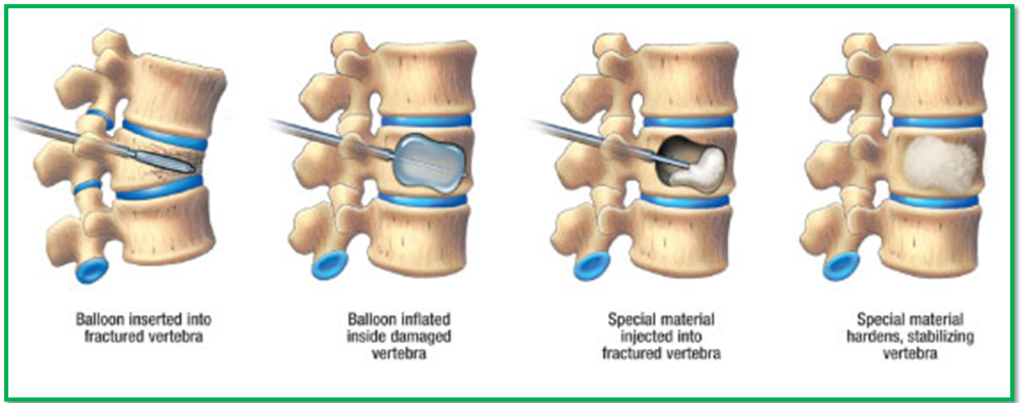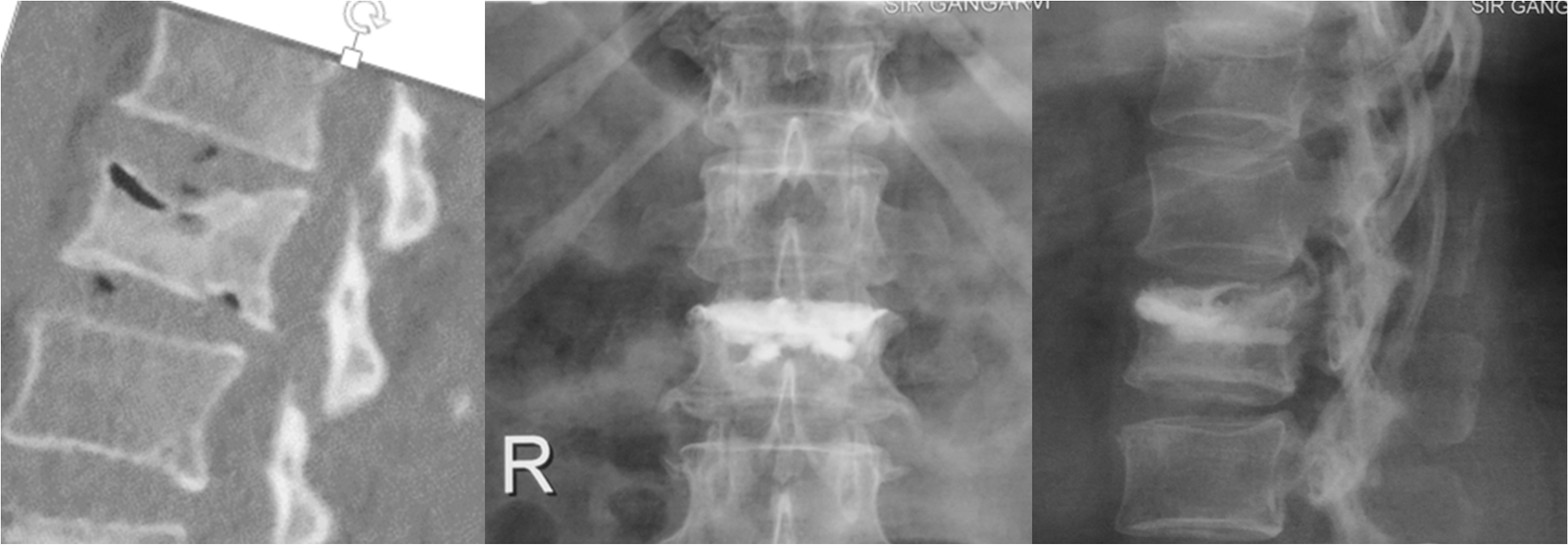

Kyphoplasty
This procedure involves gently inserting a balloon into the fractured vertebra (spinal bone). The balloon is inflated to create space, which is then filled with a special bone cement. This helps restore the height of the vertebra and corrects any abnormal curvature of the spine.

Vertebroplasty
In this procedure, bone cement is directly injected into the fractured vertebra without using a balloon. The cement hardens quickly, stabilizing the bone and relieving pain.
Recovery & Care after Surgery?
-
Hospital Stay: Typically 1-3 days, depending on the procedure.
-
Physical Therapy: Exercises to restore movement and build strength.
-
Activity Restrictions: Avoid heavy lifting or bending for a few weeks.
-
Follow-Up Visits: Regular check-ups with Dr. Shankar Acharya to monitor your healing.

Benefits of Kyphoplasty and Vertebroplasty
-
Quick Pain Relief: Many patients feel significant pain relief within hours or days.
-
Minimally Invasive: The procedures are performed through small incisions, reducing recovery time.
-
Improved Mobility: Patients can return to their normal activities much sooner.
-
Spinal Stability: The cement strengthens the fractured vertebra, preventing further collapse.
-
Short Recovery: Most people go home the same day or the next day.
Recovery after the Procedure
-
You may feel some soreness at the injection site for a few days, but this usually resolves on its own.
-
Most patients can walk and resume light activities the same day or the next day.
-
Your doctor may recommend physiotherapy or lifestyle changes to strengthen your spine and prevent future fractures.
Who needs Kyphoplasty or Vertebroplasty?
These treatments are recommended for people experiencing:
-
Severe back pain caused by vertebral compression fractures.
-
Fractures from conditions like osteoporosis, spinal tumors, or traumatic injuries.
-
Limited mobility due to spine fractures.
-
No relief from pain with medications or other conservative treatments.

How are the Procedures performed?
-
Preparation: The patient is given local anesthesia or mild sedation.
-
Procedure:
-
For kyphoplasty, a thin tube with a balloon is inserted into the fractured bone. The balloon is inflated and then removed, leaving a cavity that is filled with bone cement.
-
For vertebroplasty, bone cement is directly injected into the vertebra.
3. Completion: The cement hardens quickly, stabilizing the bone. The entire procedure typically takes about an hour per fracture.

Risks and Precautions
Both procedures are generally safe, but like any medical treatment, they come with minor risks, such as:
-
Infection.
-
Bleeding.
-
Cement leakage.


